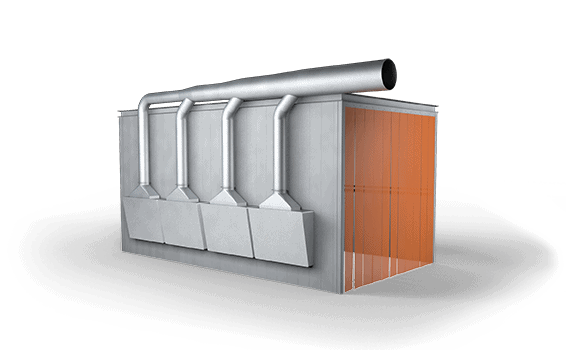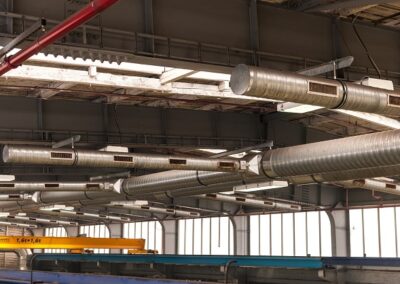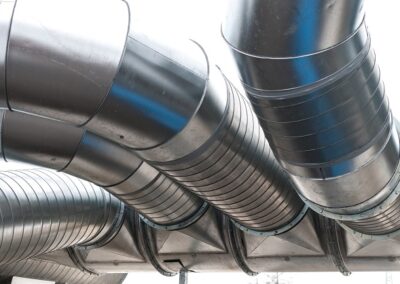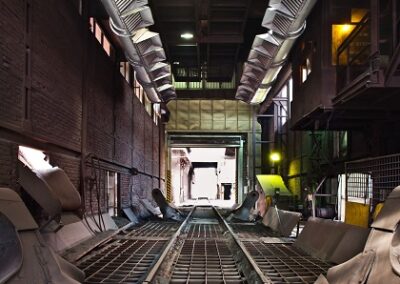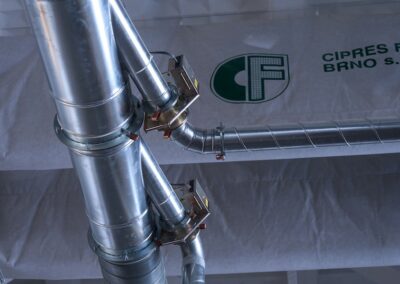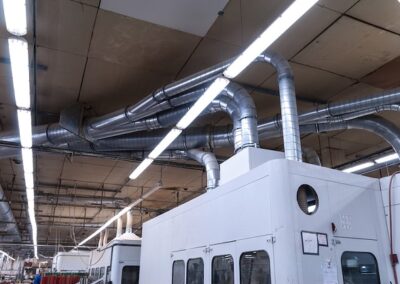Accessories
Piping parts
Segment bends
We manufacture segment bends, which are used in HVAC systems with changing airflow and extracted material direction. Upon each change in airflow direction, dust particles are carried by the outer side of the bend, where dust particles meet each segment of the bend. This piping part is usually heavily worn due to abrasion by dust particles. When choosing a segment bend, it is necessary to keep this abrasion in mind and to choose a segment bend, which will guarantee maximum service life possible.

Twin bends
We manufacture twin bends for joining two to three airflows into one. Twin bends provide continuity of airflow speeds of the joined airflows, while ensuring proper exhaust power division into individual piping branch. There cannot be any dead spots with low airflow anywhere near the bend to avoid potential waste deposits.
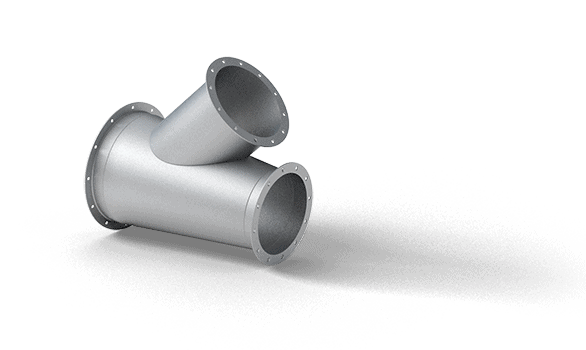
Dampers
We manufacture dampers for restricting extracted airflow. The damper plate is usually regulated with pneumatic piston. The pneumatic piston provides continuous pressure on the damper sheet, while at the same time, ensures proper damper sheet position even in the event of electric power outage. It is also possible to use servomotors for dampers in the event of low compressed air. Both servomotors and pneumatic pistons can have control voltage of 24V DC or 230 V, depending on client’s requirements.

Change-over flaps
We manufacture change-over flaps for alternating between different industrial extraction systems with a change-over flap. This enables efficient exhaust power utilization, which is distributed to the actively used technology. These dampers can be used for air with high amount of dust particles as well for air with big dust particles, for example in technological cutting. Change-over flaps can also be used in pneumatic transport systems for regulated filling of multiple containers. We do not recommend using change-over dampers for air with highly abrasive dust such as grinding or foundry dust.

Sliding dampers
Me manufacture sliding dampers, which are similar to dampers with central shaft. They are used for exhaust power regulation and for closing airways in systems, which cannot have central shaft due to high dust or fiber content of the extracted air, which would create deposits and in time might clog the pipeline. Sliding dampers are not suitable for systems for extracting air with big particles, e.g. grinding dust or foundry dust, which might jam the sliding plate.

Extraction devices
Suspended exhaust hoods
We manufacture suspended exhaust hoods for direct placement above the smoke source. The exhaust hood is connected to an extraction system, which provides sufficient and proper exhaust power through the exhaust hood. The exhaust hood extracts smoke from welding directly above the workplace and it prevents smoke from spreading into other areas.

Vertical exhaust hoods
We manufacture vertical exhaust hoods for direct placement next to the dust source. The most common application of vertical exhaust hoods is in grinding shops, grinding workplaces and for work tables. The exhaust hood is connected to an extraction system, which provides sufficient and proper exhaust power through the exhaust hood. The exhaust hood extracts dust directly at the source, which prevents the dust from spreading into the air and getting breathed in by workers, thus protecting workers’ health.

Extraction arms
We manufacture extraction arms for welding smoke or other dust-laden air extraction directly at the source. The arms are adjustable, which enables the workers to place them as close to the dust source as possible for maximum dust extraction efficiency. When used properly, extraction arms extract dust particles before it reaches workers’ lungs, and thus protects workers’ health.

Extraction booths
We manufacture extraction booths for separating specific workspaces from the rest of the workspace. The booths are equipped with steel construction, acoustic panels and lighting. Extraction booths extract and filter air through exhaust hoods with lateral placement. The exhaust hoods are connected to the central extraction system. Filtered air is returned to the booth, from where it is distributed through special sleeves placed under the ceiling into the workplace. We also manufacture booths with bottom extraction placed in the floor. The design of each cabin is unique to fit the customer’s requirements.
We will gladly help with your design – contact us.
